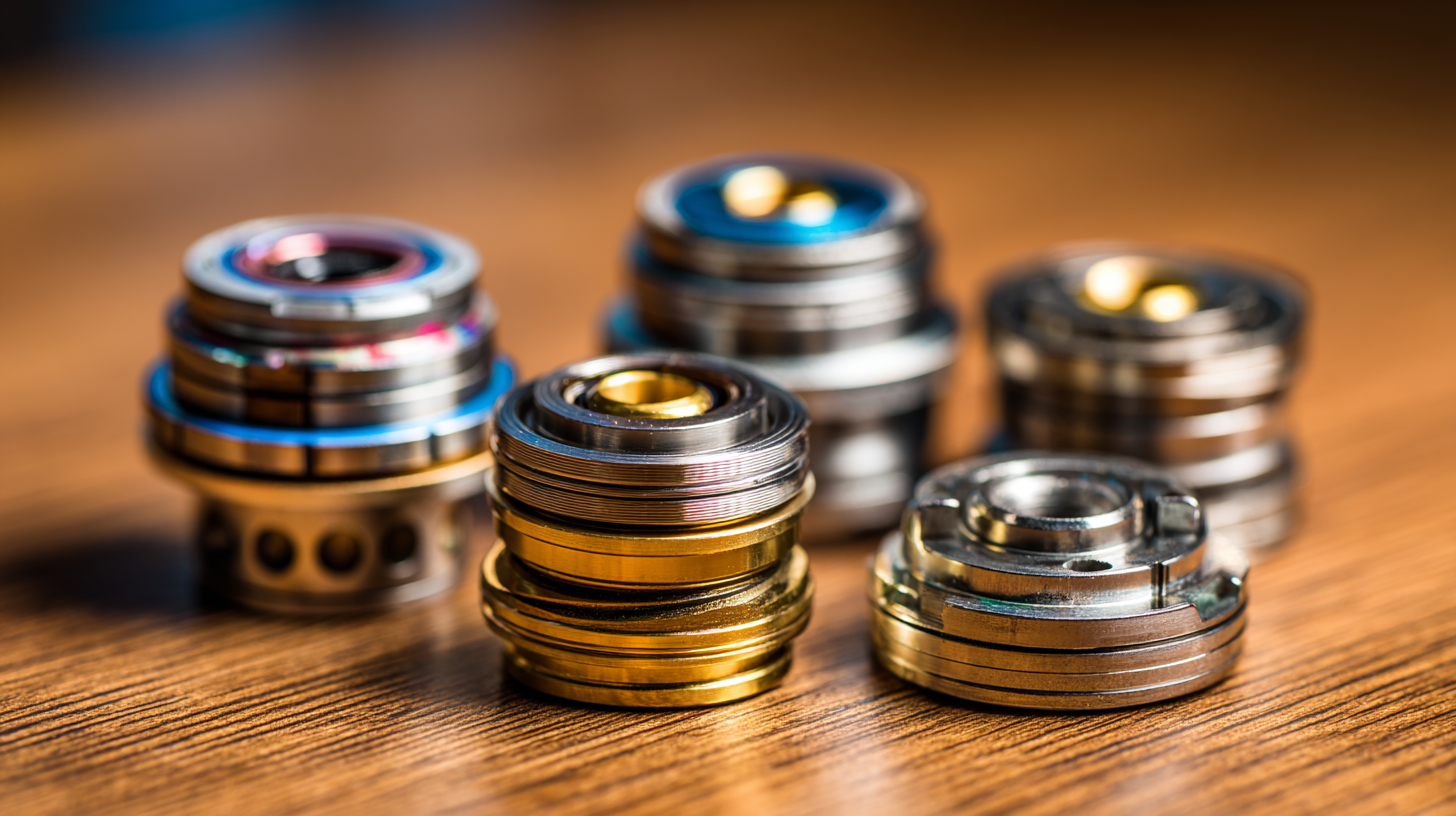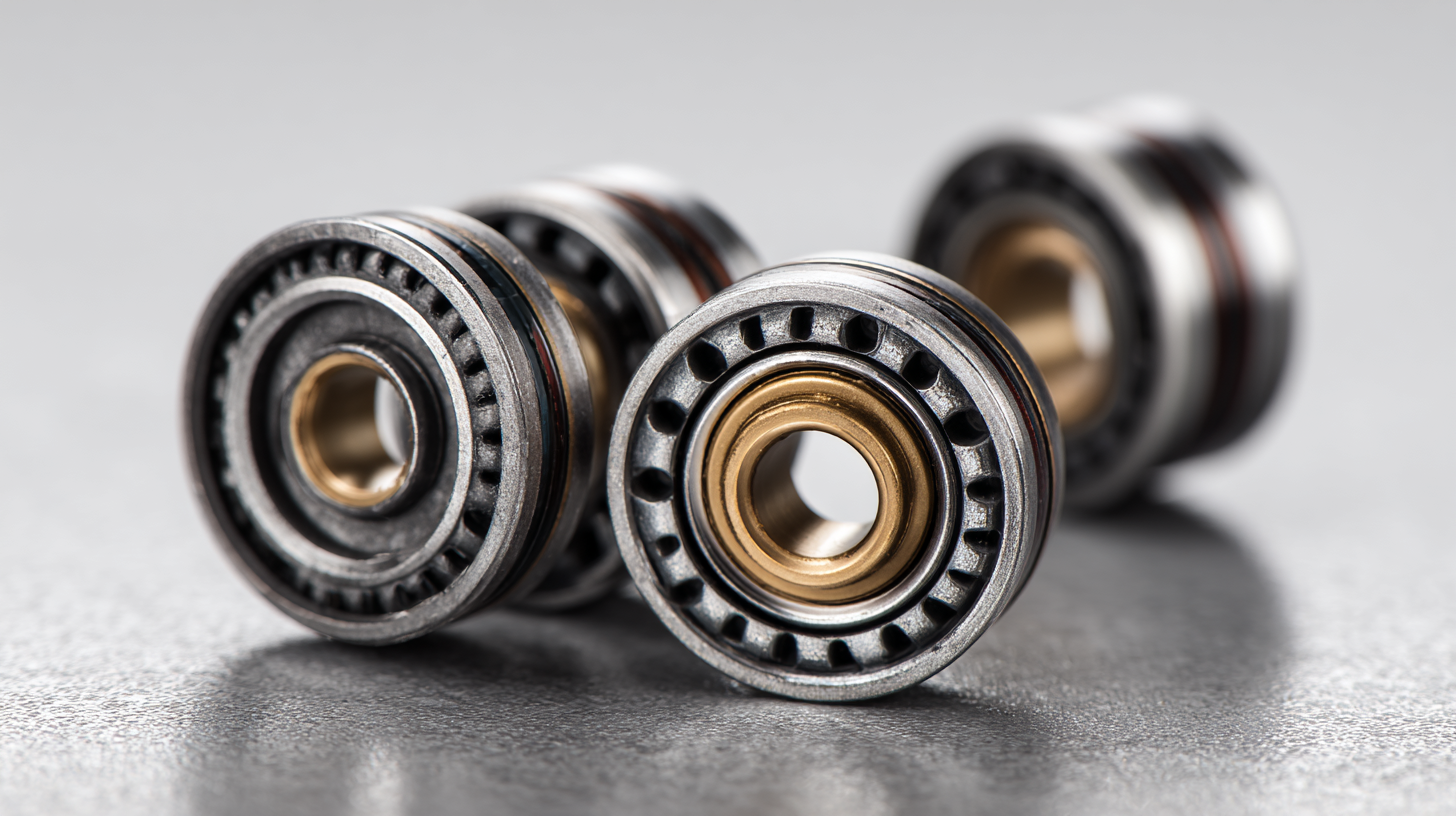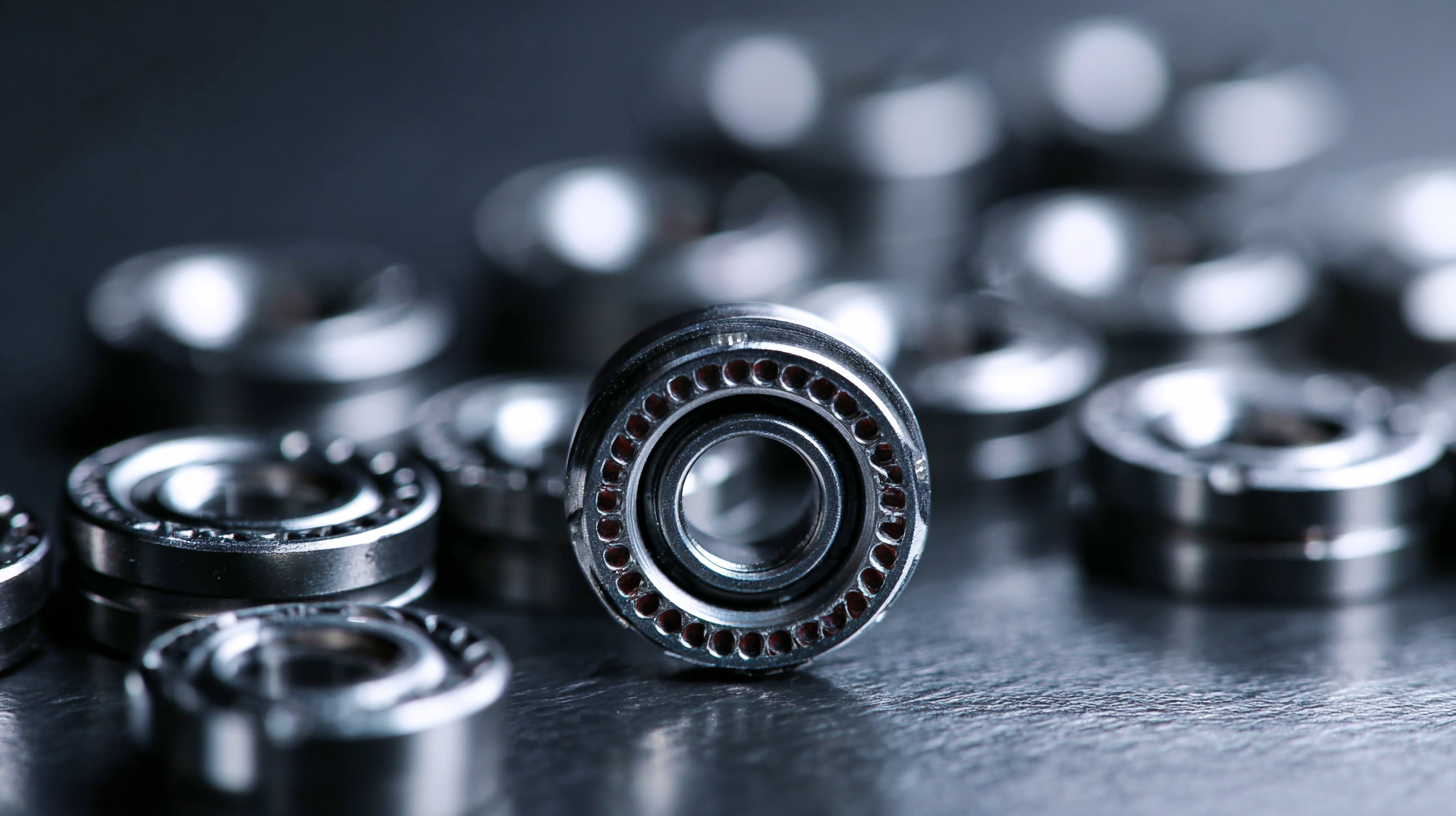The Evolution of Best Miniature Bearings in Advanced Technologies
In today's rapidly evolving technological landscape, the role of miniature bearings has become increasingly significant across various industries, from robotics to aerospace. As these components are crucial for ensuring precision and efficiency in machinery, sourcing high-quality miniature bearings is essential for manufacturers and engineers alike. This blog will explore the evolution of miniature bearings, highlighting the advancements that have led to improved performance and durability. Additionally, we will provide valuable insights on how to identify and select reputable suppliers of miniature bearings, ensuring that your projects benefit from reliable and innovative products. By understanding the key factors that contribute to the quality of miniature bearings and knowing how to assess potential suppliers, businesses can enhance their competitive edge and drive technological progress.

The Historical Development of Miniature Bearings in Engineering
The historical development of miniature bearings in engineering reflects a remarkable journey marked by innovation and precision. Dating back to the early 20th century, miniature bearings emerged from the need for smaller, more efficient components in machinery. Initially, these bearings were crafted from basic materials, primarily metals, limiting their application to larger, less intricate devices. However, as technology progressed and the demand for compact and lightweight machinery grew, engineers began experimenting with advanced materials and manufacturing techniques.
In the latter half of the century, the introduction of synthetic materials revolutionized the production of miniature bearings. These advancements allowed for improved durability and reduced friction, making them ideal for high-speed applications in various fields, from aerospace to medical devices. The advent of computer-aided design (CAD) further refined the design process, enabling the creation of highly precise miniature bearings that meet the exacting standards of modern engineering. Today, these tiny components play a crucial role across numerous industries, exemplifying how a small innovation can lead to significant advancements in technology.
The Evolution of Best Miniature Bearings in Advanced Technologies
| Year | Key Development | Material Innovation | Application Area | Advantage |
|---|---|---|---|---|
| 1950s | Introduction of stainless steel bearings | Stainless Steel | Industrial machinery | Corrosion resistance |
| 1980s | Development of ceramic hybrid bearings | Ceramics | Aerospace | Lower weight, higher speed |
| 1990s | Enhanced lubrication processes | Specialty lubricants | Robotics | Reduced friction |
| 2000s | Miniaturization technologies | Microstructures | Medical devices | Compact design |
| 2020s | Smart bearings with IoT integration | Smart materials | Automotive | Real-time monitoring |
Key Innovations in Miniature Bearing Technology for Modern Machinery
Miniature bearings play a crucial role in the performance of modern machinery, with their innovations driving efficiency and precision in diverse applications. One of the key advancements in miniature bearing technology is the introduction of high-performance materials that enhance durability and reduce friction. For instance, the use of ceramic hybrids not only minimizes weight but also provides resistance to corrosion and heat, ensuring the bearings operate effectively under extreme conditions. This innovation is particularly beneficial for aerospace and medical devices where reliability is paramount.
Another significant innovation is the development of advanced lubrication techniques that promote longer service life and optimal performance. Self-lubricating bearings are now equipped with advanced polymer matrices, allowing them to function smoothly without constant oiling. This not only simplifies maintenance but also reduces downtime, making them ideal for automated systems in factories and robotics. Furthermore, the ability to customize miniature bearings for specific environments and loads has opened up new possibilities in precision engineering, allowing manufacturers to tailor their solutions to meet the exact demands of modern machinery.
The Evolution of Miniature Bearings Technology
Applications of Miniature Bearings in Advanced Digital Devices
Miniature bearings play a crucial role in advancing digital devices, from smartphones to medical equipment. Their ability to operate under tight tolerances and in compact spaces is transforming the way manufacturers design high-performance devices. According to a recent report by Acumen Research and Consulting, the miniature ball bearing market is anticipated to witness significant growth, with a revenue increase expected in the coming years. This surge can be attributed to the rising demand for compact and efficient mechanical systems that are integral to modern technology.
The applications of miniature bearings are vast, particularly in sectors like healthcare, where precision and reliability are paramount. For instance, fixed and mobile radiography systems rely on these miniature components to achieve optimal image quality while maintaining a streamlined workflow. The specialized design of miniature bearings allows for enhanced durability and performance in equipment that requires constant motion and stability. As industries increasingly adopt advanced technologies, the integration of high-quality miniature bearings will be essential in ensuring the functionality and longevity of digital devices.
Future Trends in Miniature Bearings: The Intersection of Technology and Design
In recent years, the intersection of technology and design in miniature bearings has witnessed transformative advancements, significantly impacting various sectors, including robotics and aerospace. As the demand for precision and efficiency increases, miniature bearings have evolved from basic components to sophisticated instruments driving innovation in humanoid robotics and aviation. Industry reports indicate that the global miniature bearings market is expected to grow at a CAGR of 7.4% from 2023 to 2030, demonstrating their critical role in enhancing machinery performance.
The development of dual-driven systems, integrating miniature drive components with advanced technologies, is revolutionizing humanoid robots. For instance, companies focusing on micro-drive solutions have successfully enhanced robotic dexterity, enabling more complex movements and interactions. Recent advancements in materials, such as fatigue-resistant alloys used in high-performance bearings, are also crucial for extending the lifecycle of these components. The aerospace sector showcases similar trends, with breakthroughs in aviation ceramic bearings achieving anti-fatigue performance exceeding 50,000 hours, underscoring the significance of miniature bearings in high-end equipment reliability and efficiency. These developments signal a future where technology and design converge, yielding innovative solutions that push the boundaries of what miniature bearings can accomplish.

Challenges and Solutions in Manufacturing Precision Miniature Bearings
 The manufacturing of precision miniature bearings faces significant challenges, primarily due to stringent requirements for accuracy and reliability in advanced technologies. As industries push for higher performance and miniaturization, the demand for miniature bearings that can withstand extreme conditions while maintaining efficiency is increasing. This necessitates the development of innovative materials and manufacturing techniques to meet these evolving demands. Key challenges include ensuring the dimensional stability of bearings under various operational stresses and mitigating the effects of wear and fatigue over time.
The manufacturing of precision miniature bearings faces significant challenges, primarily due to stringent requirements for accuracy and reliability in advanced technologies. As industries push for higher performance and miniaturization, the demand for miniature bearings that can withstand extreme conditions while maintaining efficiency is increasing. This necessitates the development of innovative materials and manufacturing techniques to meet these evolving demands. Key challenges include ensuring the dimensional stability of bearings under various operational stresses and mitigating the effects of wear and fatigue over time.
To address these challenges, manufacturers are exploring advanced solutions such as additive manufacturing and the integration of smart sensors. Additive manufacturing provides opportunities to create complex geometries that traditional methods may struggle to achieve, enhancing both performance and capabilities of the miniature bearings. Meanwhile, the use of smart sensors can facilitate real-time monitoring of bearing performance, enabling predictive maintenance and reducing downtime. This synergy of technology is not only pivotal in advancing miniature bearing manufacturing but also crucial for supporting the broader trends in automation and precision engineering across various sectors.